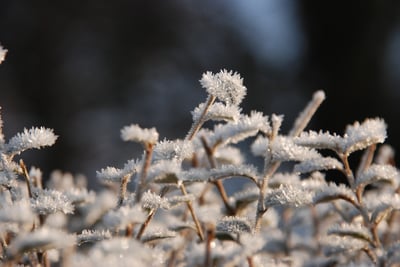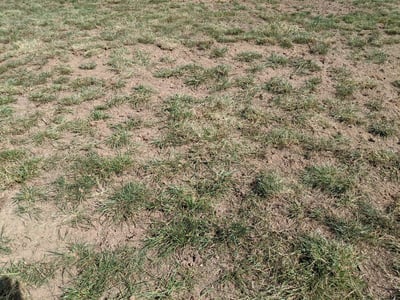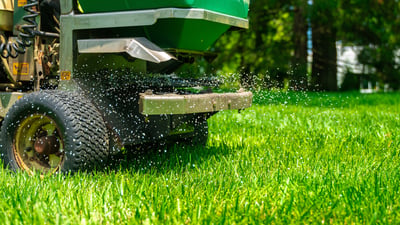


As winter fades and signs of spring start to appear in Louisville, it’s the perfect time to prepare your lawn for a successful growing season. Early spring is when your lawn begins to wake up — and what you do now can make a big difference in how thick, green, and healthy it looks all year long.
At Limbwalker, we know it’s not always clear what your lawn actually needs at this time of year. Whether you're working with a lawn care professional or managing it yourself, having a clear spring lawn care checklist ensures nothing gets missed.
In this article, we’ll walk you through the four most important spring lawn care tasks to help your yard thrive — from weed prevention and fertilization to watering and more.
Crabgrass is one of the most frustrating weeds for Louisville homeowners — and once it takes hold, it’s hard to get rid of. That’s why early spring crabgrass prevention is such an important part of your lawn care checklist.
This is where a pre-emergent herbicide comes in. Sometimes called a “crabgrass preventer,” this product creates a thin barrier at the soil’s surface that blocks crabgrass seeds from germinating.

But timing is everything. Pre-emergent products must be applied before the crabgrass starts to sprout — typically in late February or March, depending on soil temperatures. If you apply it too late, the barrier won’t work and breakthrough is likely.
Pro Tip: In Louisville, the ideal time to apply crabgrass preventer is when soil temps consistently reach around 55°F — usually when forsythia bushes bloom.
Applying pre-emergent at the right time helps stop a crabgrass problem before it starts, setting your lawn up for a healthier, weed-free season.
As your lawn comes out of dormancy, it needs a boost of nutrients to kickstart healthy spring growth. That’s where spring lawn fertilization plays a critical role.
Fertilizer supplies your grass with essential nutrients — especially nitrogen — which fuels lush, green growth during this active growing period. It also strengthens your lawn’s root system, helping it resist weeds, drought, and disease throughout the season.

At Limbwalker, we apply fertilizer during all six lawn care visits, with spring being one of the most important. For clients enrolled in our Platinum program, we also apply granulated iron during spring and early summer. This improves the chlorophyll in the grass, creating a deep, dark green color that makes your lawn stand out.
Pro Tip: Spring fertilization gives your lawn the energy it needs to grow thick and green — but applying the right product at the right time is key. A professional can help ensure your lawn gets exactly what it needs.
Spring is prime time for weeds to start invading your lawn — especially in Louisville, where we see a wide variety of aggressive, broadleaf weeds early in the season. That’s why your spring lawn care plan should include a combination of pre-emergent and post-emergent weed control.

Even if you applied a pre-emergent product, some crabgrass or broadleaf weeds may still break through. That’s where post-emergent weed control comes in — targeting what’s already sprouted.
The best strategy includes more than just products. A thick, healthy lawn is one of your strongest defenses against weeds. Dense turf blocks sunlight from reaching weed seeds, making it harder for them to grow.
Pro Tip: A full-season lawn care program that includes fertilization, weed control, and disease prevention will give your lawn the upper hand — especially during spring when everything’s growing fast.
Watering might seem simple, but doing it correctly is essential for strong spring growth. As temperatures rise and your lawn starts actively growing, consistent moisture helps support deeper root development and greener grass.
Lawns typically need around 1 to 1.5 inches of water per week from rain or irrigation. If Mother Nature isn’t cooperating, you’ll need to supplement with watering — especially in sunny or sloped areas.
A good rule of thumb: Water deeply, but less frequently. This encourages roots to grow down into the soil, rather than staying shallow and weak.
Pro Tip: Aim to water each zone for about 30 minutes, twice a week. Use a rain gauge or empty tuna can to measure how much water your lawn is getting.
Remember, your watering habits can make or break your results — especially after fertilizer or weed control applications.
While spring is a key time for lawn care, it’s only the beginning. Each season brings different challenges — from weeds and drought in summer to disease and grub issues in late summer and fall.
That’s why your lawn needs a comprehensive, year-round plan, not just a spring boost. But knowing exactly what to do — and when — can be overwhelming.
The good news? You don’t have to manage it all yourself.

A professional lawn care provider can take the guesswork out of your schedule and make sure your lawn gets exactly what it needs, when it needs it. That includes timed applications of fertilizer, pre- and post-emergents, grub prevention, and more.
At Limbwalker, we make lawn care easy and effective. Our team monitors your lawn’s condition throughout the season and adjusts your plan as needed to keep it thick, green, and healthy — from spring through fall.
Are you ready to check everything off your spring lawn care list — and set your yard up for long-term success?
At Limbwalker, we offer three lawn care program options tailored to fit your needs, budget, and lawn goals. Whether you want deep green color, maximum weed control, or all-in-one seasonal support, we’ll build a plan that works for you.
Request a quote today and take the first step toward a lawn you’ll love coming home to.



